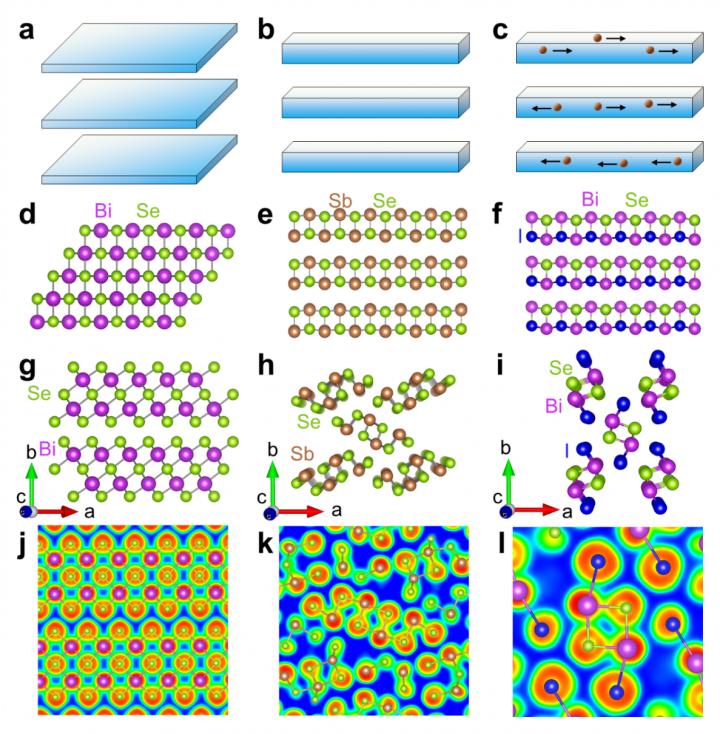
Credit: ©Science China Press
The low thermal transport properties are important for applications in thermoelectrics and thermal barrier coatings. Nowadays, the strategies to acquire low thermal conductivity in bulk materials include multi-scale defect (atomic, nano- and meso-scale), heavy molecular weight, complex crystal structure, larger unit cell and strong anharmonicity.
In a recent article in Science China Materials, Prof. Li-Dong Zhao from Beihang University and co-workers proposed a new strategy to search intrinsically low thermal conductivity in one-dimensional crystal structure. By using the first-principles calculations and experimental synthesis, they found a sort of material with extremely low thermal conductivity, namely BiSeX (X= Br, I) with one-dimensional chain structure. The mechanisms behind the low thermal conductivity were revealed from the aspect of crystal structure, by neutron powder-diffraction measurements and temperature tunable aberration-corrected scanning transmission electron microscopy (STEM).
To elucidate the origins of ultralow thermal conductivity, the authors make comparisons with several analogues that exhibit cubic- (3D), layer- (2D) and chain-like (1D) crystal structures and find that the thermal conductivity shows a decreasing trend from 3D, 2D to 1D (Fig. 1), which is due to the chemical bonding strength between the low-dimensional structure becoming progressively weaker and weaker.
“Based on these guidelines, we found that the chemical bonding along the chain further weakened with added halogen atom”, said Prof. Zhao. Therefore, the chemical bondings of BiSeX along all three crystallographic directions are weaker than in other compounds (Fig. 2), showing a quasi-0D crystal structure.
Different from the ultrahigh thermal conductivity diamond (> 2000 W m-1 K-1) with strong covalent bond between carbon atoms, the phonon transport in bismuth selenohalides was significantly suppressed. As a result, they exhibit extremely low thermal conductivity. “The thermal conductivity of BiSeI at 573 K reaches ~0.27 W m-1 K-1, which is close to the theoretical minimum value”, emphasized by Prof. Zhao.
These findings open up a prospect of achieving low thermal conductivity materials in one-dimensional chain-containing bulk structure with potential applications in the fields of thermal barrier coatings, thermoelectric materials, etc.
###
This work was published online in Science China Materials and highlighted by Science (Science, 368 (2020) 1325.) (Fig. 3).
This work was supported by the National Key Research and Development Program of China (2018YFA0702100, 2018YFB0703600), the National Natural Science Foundation of China (51772012, 51632005), the National Science Foundation for Distinguished Young Scholars (51925101), Shenzhen Peacock Plan team (KQTD2016022619565991), Beijing Natural Science Foundation (JQ18004), China Postdoctoral Science Foundation Grant (2019M650429) and 111 Project (B17002).
See the article: D. Wang, et al. “Extremely low thermal conductivity from bismuth selenohalides with 1D soft crystal structure”. Science China Materials (2020) (https:/
Media Contact
Li-Dong Zhao
[email protected]
Related Journal Article
http://dx.




